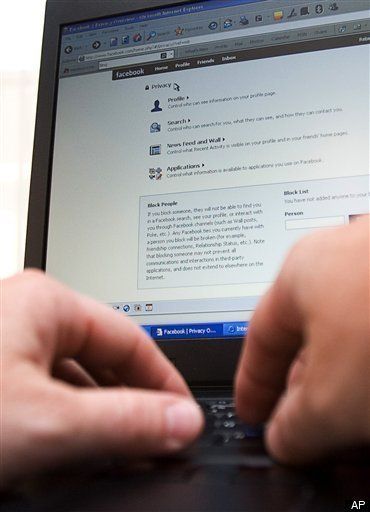
Dating site OKCupid recently published some interesting findings culled from an analysis of over 500,000 first contacts (messages or IMs) made through their free service. They looked at repeated keywords and phrases, how they affected reply rates, and other statistically significant trends in their members' online courting practices. They compiled their findings into a set of nine 'rules' to help users successfully break the ice (or at least get a conversation going) with other members.Their list got us thinking: what can these lessons of online dating teach us about relationship-building on a larger scale? What makes an online interaction feel genuine and appealing, whether it be between a suitor and his love interest, or a brand and its audience? Let's take a few of OKCupid's first impression rules and consider how they might be useful for brands:
#1 - Be literate.
Netspeak, bad grammar, and bad spelling are huge turn-offs. Our negative correlation list is a fool's lexicon: ur, u, wat, wont, and so on.
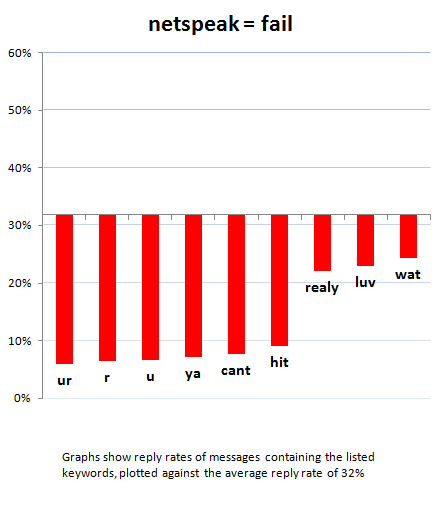
...Interesting exceptions to the "no netspeak" rule are expressions of amusement. haha (45% reply rate) and lol (41%) both turned out to be quite good for the sender. This makes a certain sense: people like a sense of humor, and you need to be casual to convey genuine laughter.
The lesson for brands: Don't underestimate your audience. No one likes to be talked down to -- whether by a suitor or a company. Speaking with humor and candor will sometimes work; but in general, what we want and expect is intelligent messaging, design, and services. We feel good about supporting smart brands (and dating smart people) - and your approach should acknowledge that.
#2 - Use an unusual greeting.
We took a close look at salutations...The results surprised us:
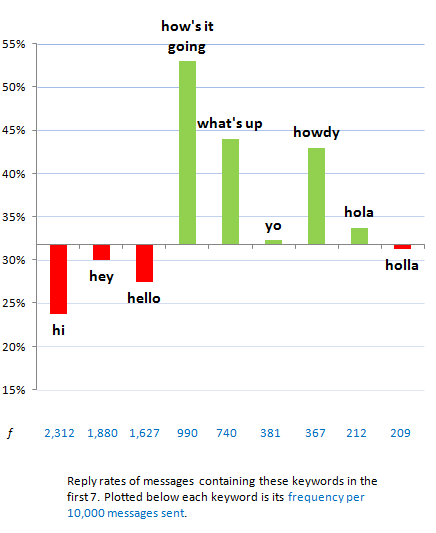
It's smarter to use no traditional salutation at all (which earns you the reply rate of 27%) and just dive into whatever you have to say than to start with hi...The more informal standard greetings: how's it going, what's up, and howdy all did very well.
The lesson for brands: This goes without saying -- but strive for originality, right from the get go. As with suitors, brands must earn their audience's attention and stand out amongst its competitors. The most obvious way to do that is to be unique.
#3 - Don't try to take it outside.
..An offer to chat or of an email address right off the bat is a sure turn off. One of the things online dating has going for it is its relative anonymity, and if you start chipping away at that too early, you'll scare the other person off.
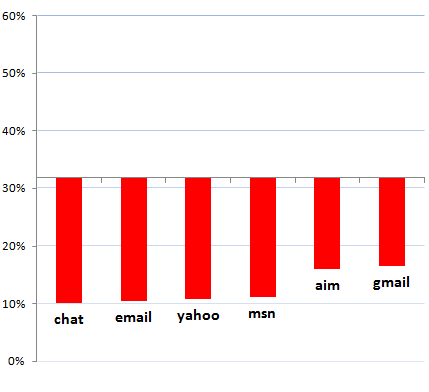
Also, don't ask for or give away a cell number (10%). I thought that was a no-brainer. For the brainless among you who are doing this, my best advice is to paypal me 25 dollars and never use a computer again.
The lesson for brands: Desperation reeks. It's hard to respect a suitor who puts his/her cards on the table too quickly (we all know a romance requires some chase). The same goes for a brand-consumer relationship; we want to feel like we're making conscious decisions, not doing what's easiest (caveat: this really only applies to 'serious,' loyal relationships: as with booty calls, some brands can capitalize on being cheap 'n easy -- but those relationships aren't meant to last.)
#4 - Bring up specific interests.
There are many words on the effective end of our list like zombie, band, tattoo, literature, studying, vegetarian (yes!), and metal (double yes!) that are all clearly referencing something important to the sender, the recipient, or, ideally, both. Talking about specific things that interest you or that you might have in common with someone is a time-honored way to make a connection, and we have proof here that it works.
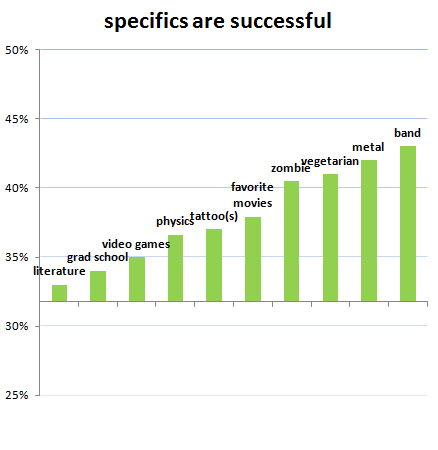
The lesson for brands: Be relevant. If a brand is cutting and pasting its message across segments and media, its audience can tell. In marketing as in courtship, making an authentic connection requires a true understanding of your potential partner and his/her beliefs, behaviors, interests, and passions.
#5 - If you're a guy, be self-effacing.
Awkward, sorry, apologize, kinda, and probably all made male messages more successful, yet none of them except sorry affects female messages. As we mentioned before, pretty, no doubt because of its adverbial meaning of "to a fair degree; moderately" also helps male messages.
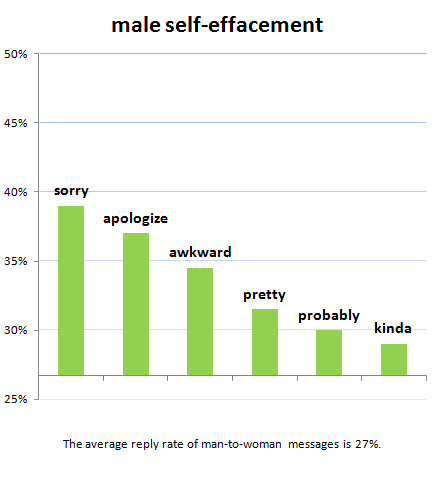
The lesson for brands: Be humble. This doesn't mean acting simpering and stupid. It means being human and real. In OKCupid, men who were willing to share their vulnerable sides were taken more seriously than those who showered their recipients with generic compliments and pick up lines. A brand should think along the same lines -- if you want to make an impression on your audience, try to behave more like a person than a corporation.
Read the original OK Cupid post on their findings here.
This article first appeared on PSFK.com.
